Authentic Cantonese Cuisine
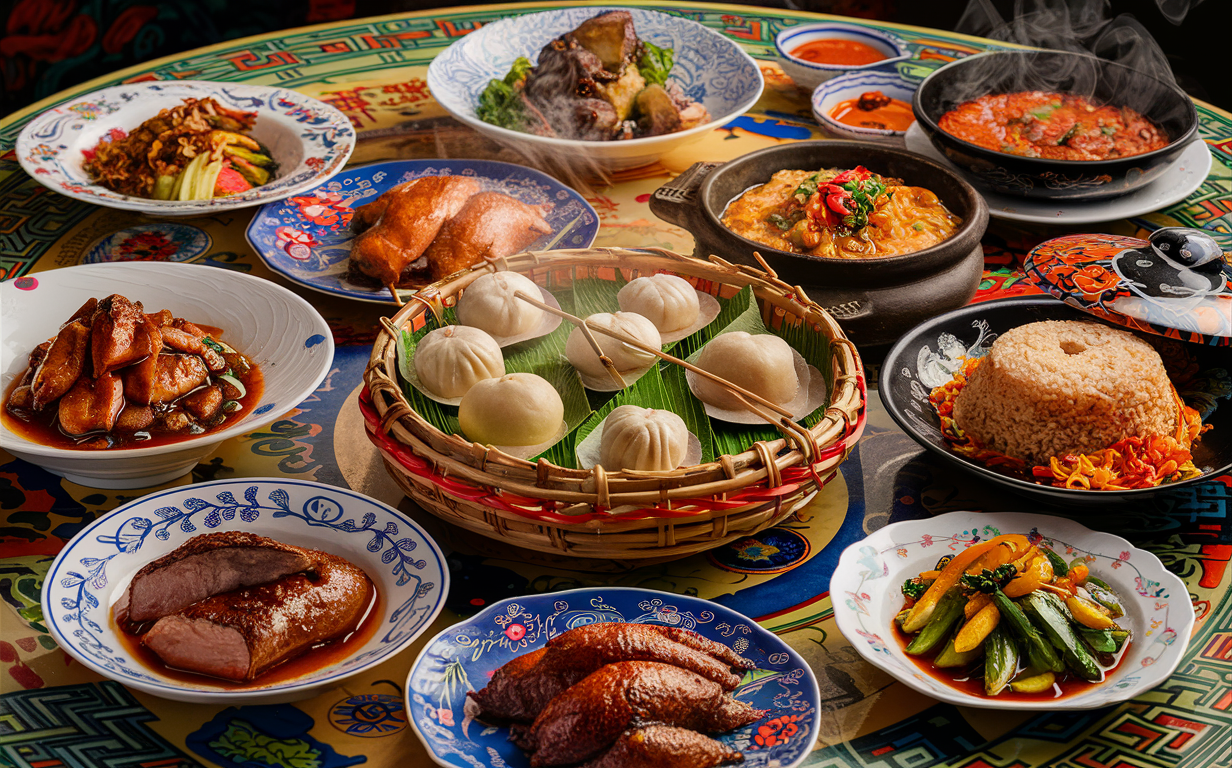
Authentic Cantonese cuisine is known for its emphasis on fresh ingredients, delicate flavors, and traditional cooking techniques. Rooted in the rich cultural heritage of China’s Guangdong province, this cuisine has gained global recognition for its unique approach to food. Unlike other Chinese cuisines, Cantonese dishes often highlight the natural taste of ingredients rather than masking them with heavy spices. The importance of using high-quality, fresh ingredients is paramount, and cooking methods like steaming and stir-frying preserve their natural flavors. Cantonese cuisine’s subtle yet sophisticated tastes make it a beloved choice worldwide.
Cantonese Cuisine: A Culinary Tradition
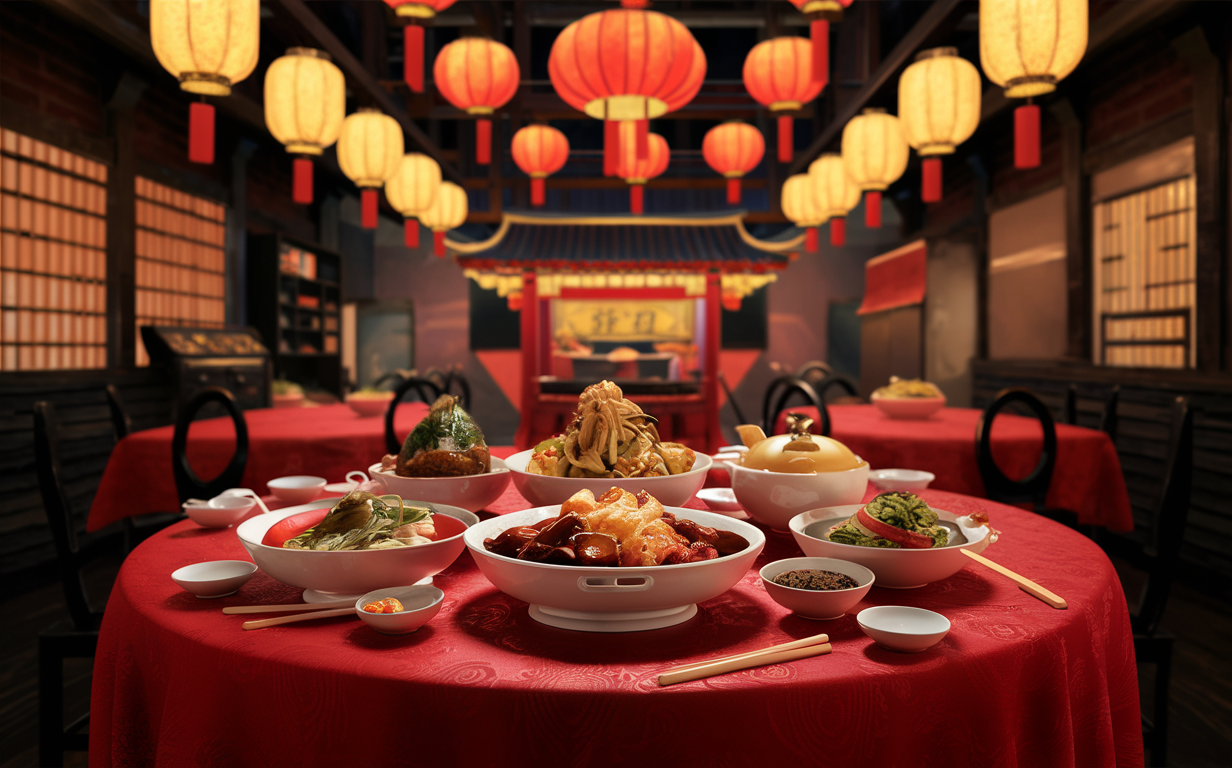
Imagine walking through a bustling market in Guangzhou, the air filled with the aroma of sizzling stir-fried noodles and freshly steamed dim sum. This is the heart of Cantonese cuisine, a culinary tradition that has been honed over centuries and known for its charm and flavor.
The Historical Background and Evolution of Cantonese Cuisine
Cantonese cuisine originates from the Guangdong province in southern China. This region, with Guangzhou as its capital, has played a crucial role in shaping this culinary style. Guangzhou, historically known as Canton, has always been a major port city. This has allowed Cantonese cuisine to evolve through influences from various cultures around the world.
Centuries ago, Guangdong was a melting pot of traders, travelers, and immigrants. Merchants from Southeast Asia, Europe, and other parts of China brought with them new ingredients and cooking techniques. This mixture of ideas and flavors became embedded in Cantonese cooking. For example, the use of soy sauce and oyster sauce, now staples in Cantonese kitchens, can be traced back to these early interactions.
In the late 19th and early 20th centuries, many Cantonese people emigrated to places like Hong Kong, Southeast Asia, and the United States. They brought their culinary traditions with them, spreading the love for dishes like char siu (barbecued pork) and wonton soup. This global diaspora ensured that Cantonese cuisine continued to evolve, incorporating new ingredients and cooking styles from their new homes.
The Influence of Guangdong Province and Guangzhou as Cultural Hubs
The Guangdong province is known for its rich cultural heritage. Guangzhou, in particular, has been a cultural hub for centuries. This city is famous not just for its food, but also for its opera, poetry, and embroidery. The city’s cultural vibrancy has had a significant impact on its culinary traditions.
Cantonese cuisine values fresh ingredients and simple cooking methods. Cooks in Guangdong believe that the natural flavors of the ingredients should shine through. This is why steaming is a common cooking method in Cantonese kitchens. Steaming preserves the natural taste and texture of the food, whether it’s fish, vegetables, or delicate dumplings.
Another hallmark of Cantonese cuisine is its variety. The Guangdong province is blessed with a diverse landscape, from fertile plains to coastal waters. This means that Cantonese chefs have access to a wide range of ingredients. Seafood, in particular, plays a significant role in Cantonese cooking. Dishes like steamed fish with ginger and scallions showcase the region’s access to fresh, high-quality seafood.
The people of Guangzhou are also known for their love of dim sum, a collection of small dishes typically enjoyed with tea. Dim sum includes a variety of items like dumplings, buns, and rice rolls, each meticulously crafted and bursting with flavor. The tradition of enjoying dim sum dates back to the ancient practice of yum cha (drinking tea), where travelers would stop at tea houses to rest and enjoy a light meal.
Local and International Influences on Cantonese Cuisine
Cantonese cuisine has been shaped by a blend of local and international influences. Locally, the abundance of fresh produce, seafood, and meats has allowed Cantonese cooks to experiment and create a wide array of dishes. For example, the use of lotus roots, bok choy, and Chinese broccoli in various dishes reflects the region’s rich agricultural resources.
Internationally, Cantonese cuisine has incorporated elements from other cultures, thanks to the historical trade routes and migration patterns. The introduction of chili peppers from the Americas, for example, added a new dimension to Cantonese cooking. Though not as spicy as some other Chinese cuisines, Cantonese chefs use chilies to add a subtle kick to dishes like kung pao chicken.
The influence of Western cuisine is also evident in Cantonese food. The popularity of dishes like sweet and sour pork and egg tarts can be traced back to the fusion of Chinese and Western flavors. Egg tarts, in particular, are a beloved treat in Hong Kong and have their origins in Portuguese custard tarts.
Cantonese cuisine is also known for its meticulous preparation and presentation. Chefs spend years perfecting their craft, learning the delicate balance of flavors and the art of presentation. The emphasis on aesthetics is evident in dishes like Peking duck, where the crispy skin and tender meat are carefully arranged to please both the eye and the palate.
A Few Iconic Cantonese Dishes
Let’s dive into some iconic Cantonese dishes that have captured the hearts of food lovers worldwide.
- Char Siu: This is a type of barbecued pork that is marinated in a sweet and savory sauce made from soy sauce, honey, and five-spice powder. The pork is then roasted until it is tender and caramelized.
- Wonton Soup: A comforting dish made with delicate wontons filled with minced pork or shrimp, served in a clear broth with a sprinkle of green onions.
- Dim Sum: A collection of small dishes such as shrimp dumplings (har gow), pork buns (char siu bao), and rice noodle rolls (cheung fun). These are enjoyed with tea in a social setting.
- Steamed Fish: Fresh fish is steamed with ginger and scallions, then drizzled with hot oil and soy sauce to enhance its natural flavors.
- Sweet and Sour Pork: Crispy pieces of pork are coated in a tangy sauce made from vinegar, sugar, and ketchup, often served with pineapple and bell peppers.
The Global Impact of Cantonese Cuisine
The global impact of Cantonese cuisine cannot be overstated. From the bustling streets of Hong Kong to the vibrant Chinatowns in cities like San Francisco and New York, Cantonese food has left an indelible mark. Its emphasis on fresh ingredients, simple preparation, and balanced flavors appeals to people all over the world.
In recent years, there has been a resurgence of interest in traditional Cantonese cooking. More and more people are seeking out authentic experiences, wanting to connect with the culinary traditions of Guangdong. This has led to a revival of classic dishes and a renewed appreciation for the skills and techniques of Cantonese chefs.
As we continue to explore and celebrate Cantonese cuisine, it is important to remember its rich history and the cultural influences that have shaped it. From the ancient streets of Guangzhou to modern kitchens around the world, Cantonese cuisine remains a testament to the power of food to bring people together and tell a story.
So, the next time you sit down to enjoy a plate of char siu or a steaming bowl of wonton soup, take a moment to appreciate the centuries of tradition and the global journey that has brought these delicious dishes to your table.
Essential Ingredients in Cantonese Cooking
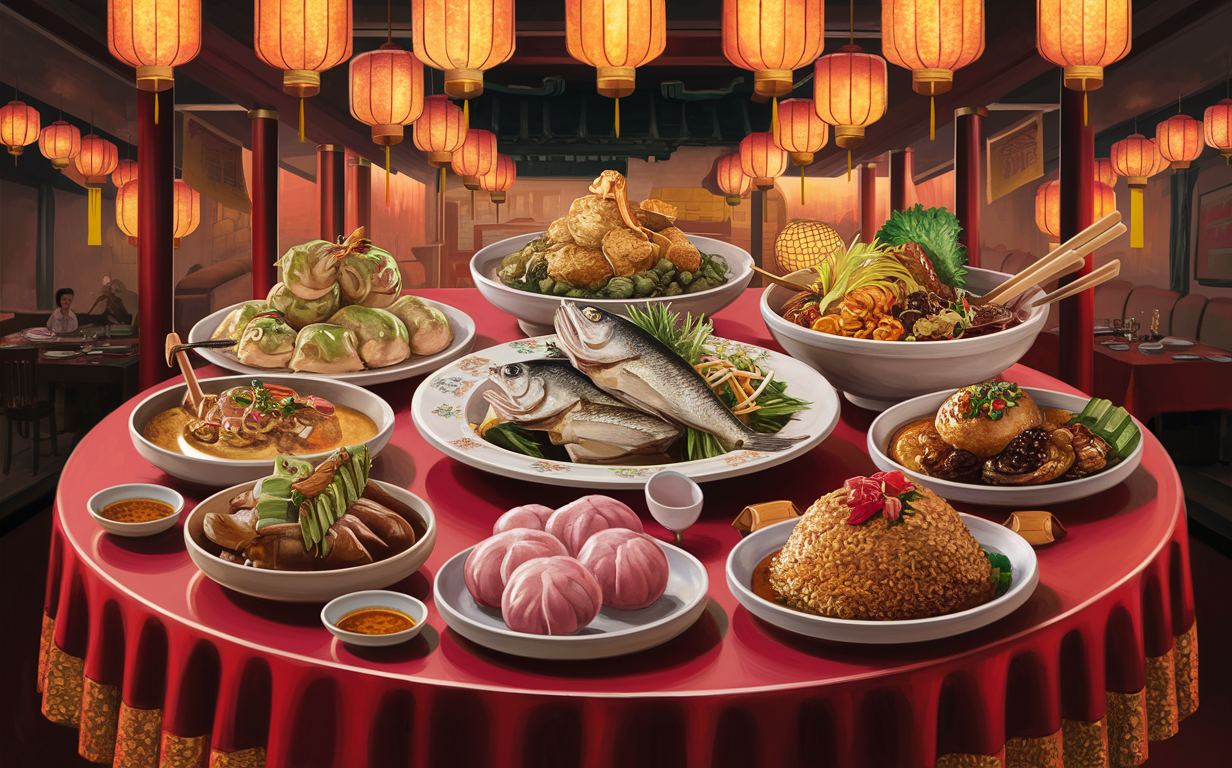
In Cantonese cuisine, the magic starts with the ingredients. Let’s dive into the essential elements that make these dishes so special.
Fresh and High-Quality Ingredients
In Cantonese cooking, freshness is key. Chefs often visit local markets early in the morning to select the freshest produce, seafood, and meats. This ensures that every dish bursts with natural flavors. Imagine biting into a crisp, green bok choy or savoring a piece of tender, moist fish. The freshness is what makes these ingredients shine.
Key Ingredients in Cantonese Cuisine
- Soy Sauce: This is like the salt and pepper of Cantonese kitchens. There are two types: light and dark. Light soy sauce adds a salty, umami flavor, while dark soy sauce gives a richer, sweeter taste.
- Oyster Sauce: Made from oysters, this thick, brown sauce adds a savory depth to stir-fried dishes. It’s a staple in many homes.
- Rice Wine: Similar to sherry, this wine is used in marinades and sauces. It helps to tenderize meats and adds a subtle sweetness.
- Ginger and Garlic: These are the dynamic duo in Cantonese cooking. They add a zingy, aromatic punch to dishes.
- Spring Onions: Also known as green onions or scallions, these are used both as a garnish and a flavor enhancer.
- Sesame Oil: A little bit goes a long way. This oil adds a nutty flavor and is often used in dressings and marinades.
- Five-Spice Powder: This blend includes star anise, cloves, Chinese cinnamon, Sichuan peppercorns, and fennel seeds. It gives dishes a warm, complex flavor.
- Hoison Sauce: This thick, sweet sauce is used in marinades and as a dipping sauce. It’s made from soybeans, garlic, and various spices.
The Role of Spices and Condiments
Spices and condiments are the unsung heroes in Cantonese cooking. They transform simple ingredients into mouth-watering dishes. For example, adding a dash of five-spice powder to roast pork can create a flavor explosion. Soy sauce, on the other hand, enhances the natural flavors of the ingredients without overpowering them.
Traditional and Popular Cantonese Dishes
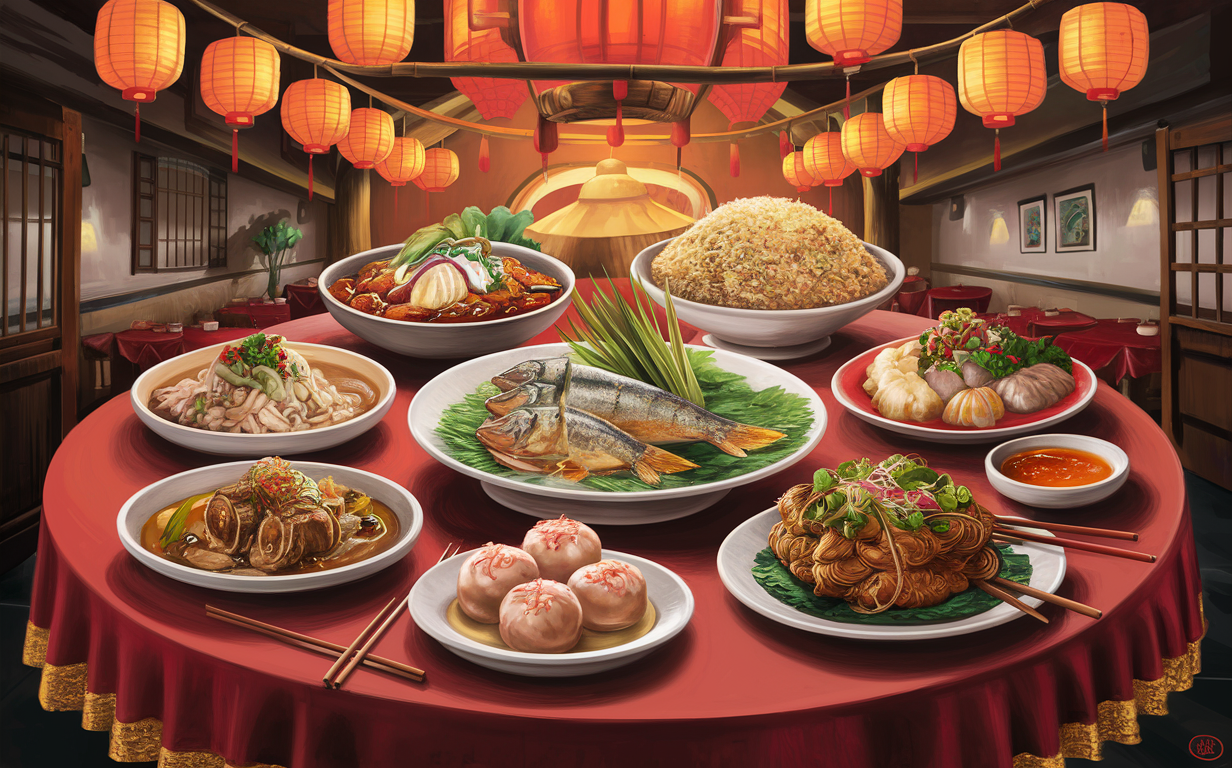
Now that we know the essential ingredients, let’s explore some iconic Cantonese dishes. These dishes are not just about taste; they also tell a story about the culture and traditions of Cantonese cuisine.
Dim Sum
Dim Sum is more than just food; it’s an experience. Served in small steamer baskets or on small plates, Dim Sum includes a variety of bite-sized dishes like dumplings, buns, and rolls. Families and friends gather to enjoy these little treats, often accompanied by tea. Dim Sum is like a social event, a tradition that brings people together.
Char Siu
Char Siu, or Cantonese barbecue pork, is a must-try. The pork is marinated in a mixture of honey, five-spice powder, soy sauce, and hoisin sauce, then roasted to perfection. The result is a sweet, savory, and slightly charred piece of meat that melts in your mouth. It’s often served with rice or noodles.
Cantonese Roast Duck
Roast duck is another hallmark of Cantonese cuisine. The duck is marinated with a blend of spices, including star anise and cinnamon, then roasted until the skin is crispy and the meat is tender. It’s usually served with a sweet plum sauce. This dish is often enjoyed during special occasions and festivals.
Sweet and Sour Pork
This dish is a crowd-pleaser. Bite-sized pieces of pork are coated in batter, deep-fried, and then tossed in a tangy sweet and sour sauce made from vinegar, ketchup, and sugar. It’s a perfect balance of flavors and textures that keeps people coming back for more.
Wonton Soup
Wonton soup is a comforting dish that features dumplings filled with minced pork or shrimp, floating in a clear, flavorful broth. The wontons are delicate and bite-sized, making this soup a favorite starter or light meal.
Chow Mein
Chow Mein is a stir-fried noodle dish that’s both delicious and versatile. It includes a mix of vegetables, meats like chicken or beef, and a savory sauce. The noodles are slightly crispy, adding a delightful texture to each bite.
Steamed Fish
Steamed fish is a simple yet elegant dish that highlights the freshness of the ingredients. The fish is usually steamed with ginger and spring onions, then drizzled with a light soy sauce. It’s a healthy and flavorful option that’s often served during family gatherings.
Congee
Congee is a rice porridge that’s often eaten for breakfast or as a comfort food. It’s made by simmering rice in a lot of water until it breaks down into a creamy consistency. It can be plain or flavored with ingredients like chicken, pork, or century eggs. It’s soothing and easy to digest.
Egg Tarts
For dessert, Cantonese cuisine offers egg tarts. These are small pastries filled with a creamy, custard-like egg filling. The crust is buttery and flaky, providing a perfect contrast to the smooth filling. They’re a popular treat in bakeries and during tea time.
Variations and Regional Specialties
Cantonese dishes have many regional variations. For example, in Hong Kong, you might find fusion dishes that incorporate Western ingredients. In Guangzhou, the focus is often on traditional, time-honored recipes. These regional differences add a rich diversity to Cantonese cuisine.
In conclusion, authentic Cantonese cuisine is a delightful blend of fresh ingredients, balanced flavors, and cultural traditions. Whether you’re enjoying a plate of Char Siu or savoring the delicate flavors of Dim Sum, each dish offers a unique taste of Cantonese culture. So the next time you sit down for a Cantonese meal, remember the care and craftsmanship that goes into every bite. Enjoy!
Bringing Cantonese Flavors to Your Kitchen
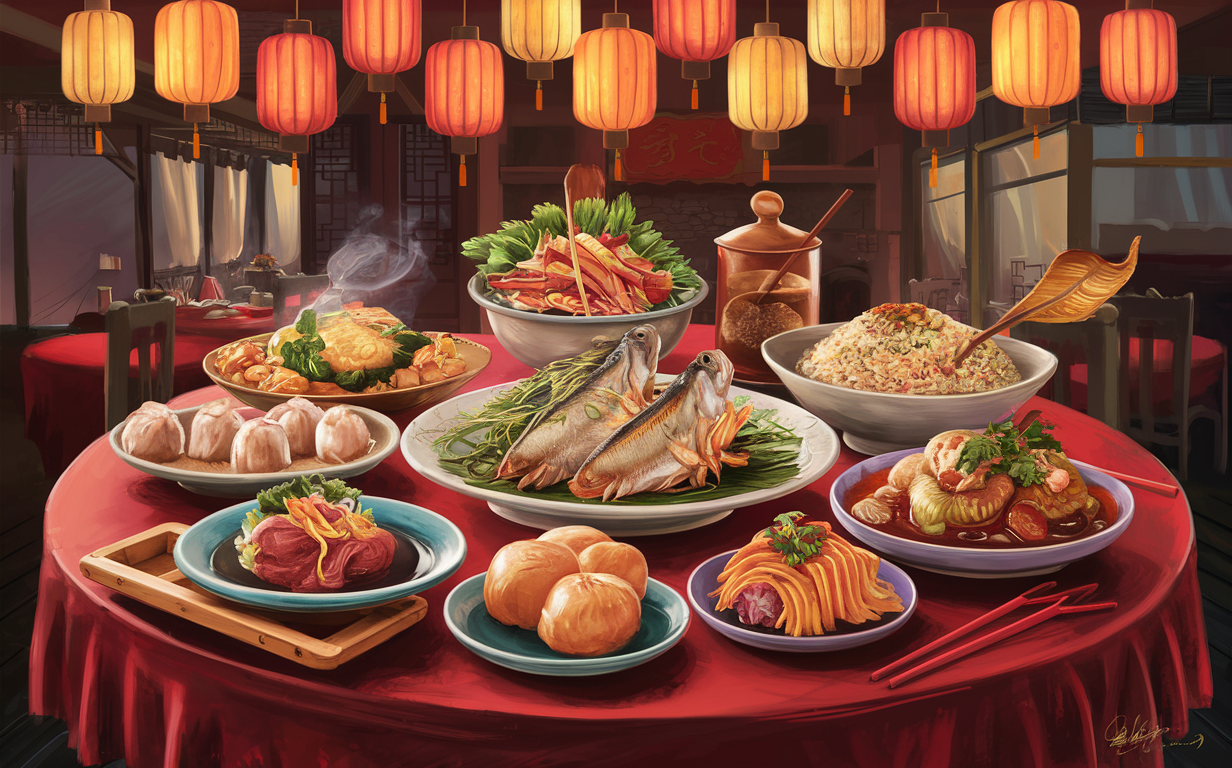
Wrapping up, it’s clear that Cantonese cuisine offers a rich tapestry of flavors and traditions that stand out in the world of Chinese cuisine. I encourage you to try making these dishes at home using authentic ingredients and techniques. Trust me, once you experience the delicate flavors and fresh ingredients, you’ll be hooked. Looking for authentic recipes or ingredients? Reach out to Moon Kee Restaurant at (646) 438-9283 or hello@moonkeerestaurant.com. Dive into the cultural heritage and savor the authentic flavors of Hong Kong right here in New York City!
